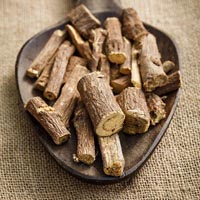 Smart Citations
Smart CitationsSee how this article has been cited at scite.ai
scite shows how a scientific paper has been cited by providing the context of the citation, a classification describing whether it supports, mentions, or contrasts the cited claim, and a label indicating in which section the citation was made.
Licorice and its applications for SARS-CoV-2
Licorice is a common Chinese herbal medicine in China. Glycyrrhizic acid (C42H62O16), and glucoside are the major active chemical ingredients that possess antioxidant, antiviral, anti-infective, and anti-inflammatory properties. It can either cure (e.g. SARS-CoV-2) or cause diseases (e.g. hypertension or heart attack), so care is needed in the dosage of licorice. Some library search engines were used such as SCI/SCIE, PubMed, and Scopus. In this mini-review, the keywords searched include “licorice”, “traditional Chinese medicine + licorice”, “SARS-CoV-2”, “licorice + SARSCoV- 2” etc. in the last thirty years. The author discusses the background, usage, risk of licorice, the research progress on its antiviral activity as well as some Traditional Chinese Medicine (TCM) formulations for the prevention and treatment of COVID-19.
How to Cite
PAGEPress has chosen to apply the Creative Commons Attribution NonCommercial 4.0 International License (CC BY-NC 4.0) to all manuscripts to be published.

 https://doi.org/10.4081/idhm.2022.184
https://doi.org/10.4081/idhm.2022.184




